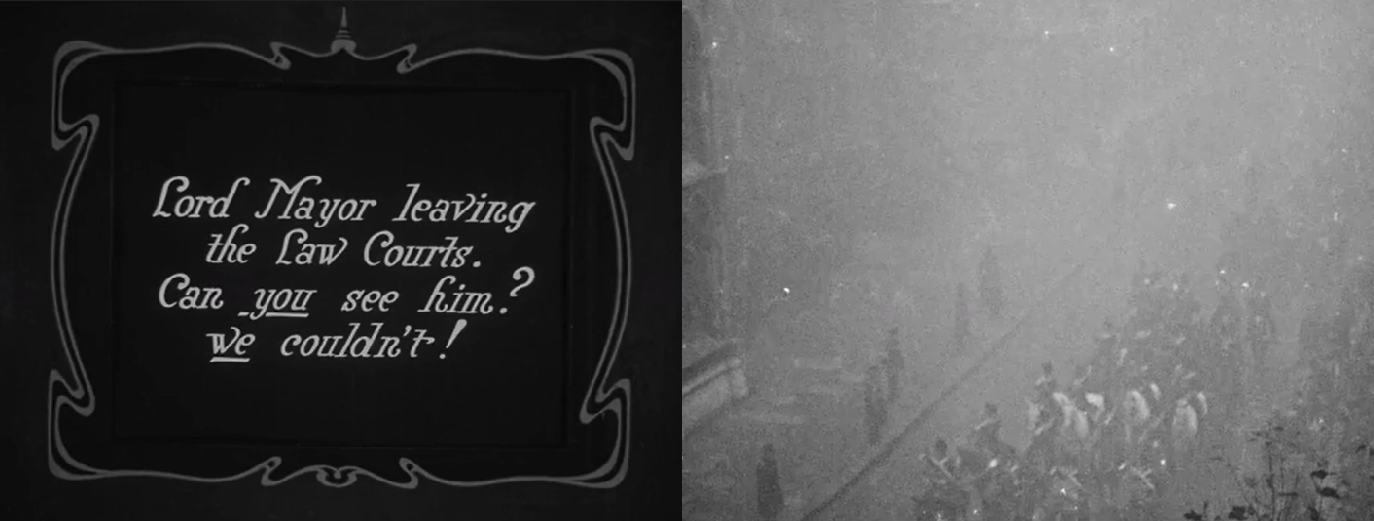From "potted sunshine" to animated diagrams: Topical Budget and the filming of British Newsreels
In early twentieth-century Britain, silent, black and white newsreels were a major source of news for millions of people. Issued by the Topical Film Company twice a week and circulated in cinemas nationwide, Topical Budget quickly became one of the most popular newsreels in Britain. With its aim of providing both information and entertainment, Topical Budget issues reported major events alongside stories covering everything from sports and the British royal family to the weather, fashion, dog shows and much more.
Comprising over six thousand films, British Newsreels, 1911-1930: Culture and Society on Film represents the vast majority of surviving Topical Budget newsreels, now digitised and presented together for the first time. Interspersed throughout the collection are a number of films which focus on the process of filmmaking itself and new techniques.
Released in December 1921, the story “Potted Sunshine” Pierces London’s Night showcases the use of artificial light in night photography. Trumpeted on an intertitle card as ‘Topical’s great discovery of “Potted Sunshine”’, this pioneering technique was used to film various scenes of London’s night life: members of the Russian Ballet leaving the Alhambra, people queuing to board a late-night tram service and the loading of a newspaper van at 2AM. With the use of a second camera operator to show how filming was carried out, the focus of this story is as much on the method of recording itself as it is on the events being filmed.

Topical’s cameramen demonstrating night photography with artificial light, ‘”Potted Sunshine” Pierces London’s Night’, issue 536-2. Still images reproduced by courtesy of the British Film Institute. https://www.bfi.org.uk/
Alongside Topical Budget’s celebration of its own technical mastery was a striking awareness of its limitations. In keeping with the light tone of its coverage, the newsreel was not averse to poking fun at its own inability to capture footage as it might have liked. In issue 637-2, the story Ghostly Lord Mayor’s Show acknowledged the weather’s role in complicating filming. Subtitled ‘Phantom Empire Pageant in November Fog’, the story featured fog-obscured shots of the Mayor leaving the Law Courts, playfully introduced with an intertitle card asking, ‘Can you see him? We couldn’t!’

The Lord Mayor’s Show is obscured by fog, ‘Ghostly Lord Mayor’s Show’, issue 637-2. Still images reproduced by courtesy of the British Film Institute. https://www.bfi.org.uk/
As many modern-day journalists would attest, one of the most crucial elements of capturing breaking news stories is being in the right place at the right time. This was even more of a challenge for Topical’s reporters, particularly when following the movements of celebrities seeking to keep their private lives out of the public eye. In August 1924, issue 679-1 included a story covering the Prince of Wales’ holiday. Undeterred by the Prince having ‘escaped’ their cameras by boarding his liner at 4am, Topical cleverly reframed the story around his evasion, titling it Prince’s Bold Bid For Privacy on Holiday and including an ‘animated diagram’ illustrating how his ‘historic exploit’ was achieved: a fascinating film when viewed in the context of the royal family’s continued relationship with the press over the following century.

Topical’s ‘animated diagram’ of the Prince’s departure on holiday, ‘Prince’s Bold Bid For Privacy on Holiday’, issue 679-1. Still images reproduced by courtesy of the British Film Institute. https://www.bfi.org.uk/
Although spanning only twenty years, Topical Budget captured some of the most pivotal events in British and world history, from the Titanic disaster and the First World War to Women’s Suffrage and Irish independence. The films in British Newsreels, 1911-1930 can tell researchers much not only about how the news was reported to contemporary audiences, but how filmmakers and journalists capitalised on the rapidly developing art of motion picture capture to do so.
Visit British Newsreels, 1911-1930 to view more Topical Budget newsreels from the collections of the British Film Institute and Imperial War Museums.
About the author
Jade Bailey is an assistant editor at AM.
About the collection
British Newsreels, 1911-1930 is out now. The films included in this article are open-access for 30 days and can be found here:
https://www.britishnewsreels.amdigital.co.uk/Documents/Detail/potted-sunshine-pierces-londons-night/25362619
https://www.britishnewsreels.amdigital.co.uk/Documents/Detail/ghostly-lord-mayors-show/24546605
https://www.britishnewsreels.amdigital.co.uk/Documents/Detail/princes-bold-bid-for-privacy-on-holiday/25204588
Recent posts

The blog highlights American Committee on Africa, module II's rich documentation of anti-apartheid activism, focusing on the National Peace Accord, global solidarity, and student-led divestment campaigns. It explores the pivotal role of universities, protests, and public education in pressuring institutions to divest from apartheid, shaping global attitudes toward social justice and reform.

This blog examines how primary sources can be used to trace the impact of young voices on society, particularly during pivotal voting reforms in the UK and the US. Explore materials that reveal insights into youth activism, intergenerational gaps, and societal perceptions, highlighting their interdisciplinary value for studying youth culture, activism, and girlhood across history.
